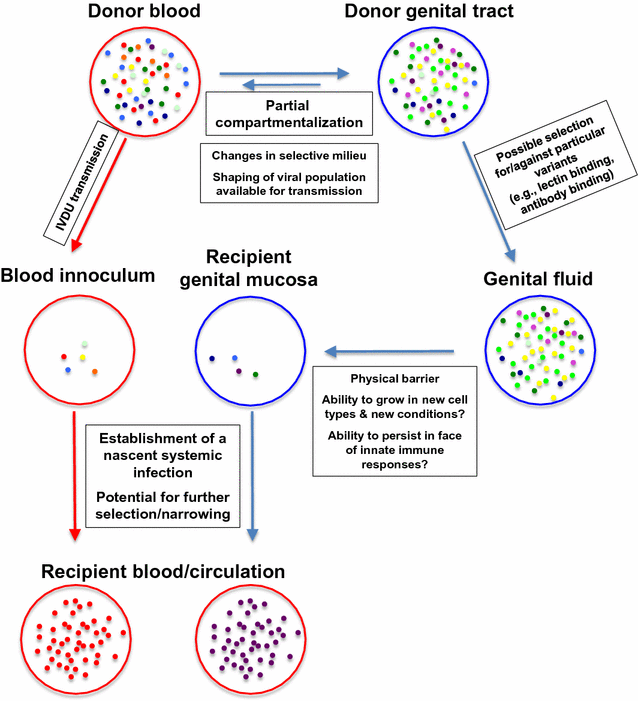The HIV-1 transmission bottleneck
- PMID: 28335782
- PMCID: PMC5364581
- DOI: 10.1186/s12977-017-0343-8
The HIV-1 transmission bottleneck
Abstract
It is well established that most new systemic infections of HIV-1 can be traced back to one or a limited number of founder viruses. Usually, these founders are more closely related to minor HIV-1 populations in the blood of the presumed donor than to more abundant lineages. This has led to the widely accepted idea that transmission selects for viral characteristics that facilitate crossing the mucosal barrier of the recipient's genital tract, although the specific selective forces or advantages are not completely defined. However, there are other steps along the way to becoming a founder virus at which selection may occur. These steps include the transition from the donor's general circulation to the genital tract compartment, survival within the transmission fluid, and establishment of a nascent stable local infection in the recipient's genital tract. Finally, there is the possibility that important narrowing events may also occur during establishment of systemic infection. This is suggested by the surprising observation that the number of founder viruses detected after transmission in intravenous drug users is also limited. Although some of these steps may be heavily selective, others may result mostly in a stochastic narrowing of the available founder pool. Collectively, they shape the initial infection in each recipient.
Keywords: Bottleneck; Genital mucosa; HIV-1; Intravenous drug user; Transmission.
Figures

References
-
- Haaland RE, Hawkins PA, Salazar-Gonzalez J, Johnson A, Tichacek A, Karita E, Manigart O, Mulenga J, Keele BF, Shaw GM, et al. Inflammatory genital infections mitigate a severe genetic bottleneck in heterosexual transmission of subtype A and C HIV-1. PLoS Pathog. 2009;5(1):e1000274. doi: 10.1371/journal.ppat.1000274. - DOI - PMC - PubMed
Publication types
MeSH terms
LinkOut - more resources
Full Text Sources
Other Literature Sources
Medical

